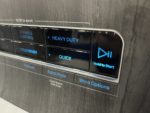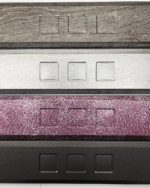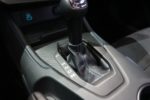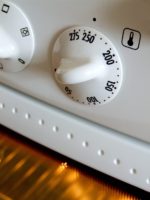Comparing Silk Screen & Pad Printing
September 16, 2024
At Sanwa, we have over 40 years of experience printing on parts, assemblies, and devices using both silk screen and pad printing technologies. Printing can bring your part to life with textures and patterns, or serve the role of safety and instruction with printed text and color.
Wondering which method makes the most sense for your project? The choice between the two often depends on factors like the shape of the part, the complexity of the design, and production volume.

About Silk Screen Printing
Silk screening, or fine expression silk printing (FESP), is accomplished by pressing ink through a stenciled mesh screen, resulting in a printed design on the other side. Silk screen printing delivers excellent chemical resistance (aka, the ink cannot be peeled off), and can even provide a tough-sensation texture to your part.
Many operation panels now are touch only (like iPhones), but for people who are visually impaired, this can be a challenge. Having a printed area with a texture helps guide users to push the correct button.
Design options with silk screen printing are unlimited, as are colors. Whether you’re looking for rich wood grain, modern stone or earthy leather patterns, silk screen delivers with anywhere from a high gloss to a matte finish. And with silk screening, we’re able to use the same screen over and over again with different colors and finishes, allowing for product refreshes that are cost effective.
If you’re curious about where to use silk screen printing, the options are nearly limitless in that realm, too. We provide silk screen printing for dashboards and operational panels in the auto, appliance, aerospace and medial industries. Silk screening can also be used for common home goods, like interior lighting or fans.
Silk screen printing satisfies the need for a part’s longevity as well as aesthetic excellence. To summarize, the benefits include:

Flexibility in design
Durability and chemical resistance
Customization and branding
Aesthetic appeal
Suitability for high-volume production
About Pad Printing
Pad printing involves taking a two-dimensional graphic and transferring it onto a three-dimensional part. During the process, a flexible silicone pad is dipped onto an etched base plate with ink and then applied to an object. This allows for accurately applying images and text on curved products such as:
Pens
Water bottles
Keyboards
Calculators
Golf balls
Video game controllers
Medical tubing
Auto and aerospace panels

The benefits of pad printing include the ability to print onto curved or irregular-shaped surfaces with fine detail, and a low overall cost. In contrast, silk screen printing is unable to be used with dome-shaped or curved parts. While the color options with pad printing are more limited, it remains a contender for clearly displaying text, numbers or icons with high contrast.

Thus, pad printing is a good fit for entry-level or short-lifespan parts with alpha-numeric displays, especially for use in high-turnover settings. To summarize, pad printing benefits include:

Moldability over curved or irregular surfaces
Ability to produce small, detailed designs
Printing on a wider variety of materials
Cost-effectiveness for small production runs
Faster setup time for multicolor prints
Silk Screen and Pad Printing with Sanwa
Our customers rely on Sanwa for quality performance and the ability to meet the challenge of complex designs. Our printing technologies allow for detailed graphics on rounded surfaces, as well as meticulous patterns and textures. These capabilities — coupled with industry leading in-mold labeling (IML) — give our customers a competitive edge in their supply chain. Get in touch to speak with our team about meeting the challenge of your complex printed design.